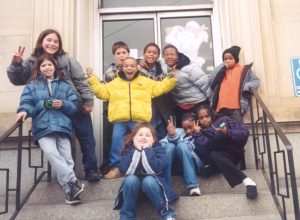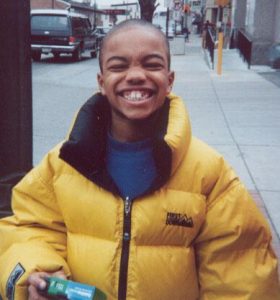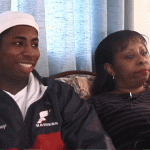Steelton Elementary Schools

Boys and Girls Club Children

Laurence
Joannie Poindexter
Today, Joannie Poindexter is a Teacher’s Aid and she says she sees an enormous change in school attitudes among her students: “During black history month, they were learning about all the famous people, black people, black Americans…and you know what [one boy] said to me? ‘Mrs. Poindexter, why can’t you be in this?’ Does that tell you something? And when he sees me, he hugs me, and he’s a white boy.”
Not only does she sense a change with the white students, but the teachers as well. “Today, you don’t see [racist attitudes], the teachers] are young, twenty- four, twenty-eight, and they don’t seem to show prejudice, they’re hugging the kids…and a lot of the kids need that.”
Steelton-Highspire High School
 Kenny Hibbert
Kenny Hibbert
Kenny Hilbert graduated from Steelton-Highspire High School in 2000 and he loved his years as a student there. He feels that African American history is very important to learn because it teaches others to understand, instead of judge, others:
It’s very important to know …it’s good to know everybody’s culture and ethnic background when you’re going through high school so you can learn about, later on in college, or besides college, in like, life, so you know everybody’s culture and understand where they’re coming from and how to judge them, not by their skin color, but by their knowledge and who they are, by their insides…
Kenny shared with me during the interview that these days, as a student at Shippensburg University, he feels 100% comfortable attending school functions where he is the only African American present: “I went out to the Rugby house last night… I was the only black guy there, and I had fun…”
When looking back on his school experience he describes it as “diverse, fun, and relaxed.” The fact that he says “relaxed,” when his mother, Barbara Barksdale, had to start a “riot” in order to receive African American history, indicates that times have changed for the better.
Steelton-Highspire High School is by far the most diverse school I’ve walked into. Although forty years ago, people might have complained about this diverse environment, Theresa Shuey, a senior, commented: “I like how diverse it is. And you see other schools where it is an all-white school and I like it here because you get every single type of culture. So you know, when you get out, it isn’t, like, a culture shock.” Clearly, this generation thinks differently than that of her parents. She also notes, “I think that we are all open-minded about everyone. I mean, we are not just going to sit there and look at everybody and judge them on their looks, because that is not fair.”
I asked the students what they think when they hear of their schools’ racist past, and they were appalled. Aaron Hatcher says, “…it’s interesting to see what [African Americans] had to go through. To think it was that hard to go to school back then, it’s surprising.” He also noted that more districts should be like Steelton-Highspires’:
When you go to a school district where you are constantly around people of other races, I mean, it’s not brain washing, but you get used to it. Any stereotypes you have, you’ll soon realize, that’s all they are, stereotypes. If you go to say, a predominantly white or black school and you hold these stereotypes and you don’t see anyone from another race, you won’t get rid of them because you will have no chance to get rid of them. And then you go off into the real world and you will separate yourself. I think that more school districts that are more racially balanced like this one will help a lot in the problem.